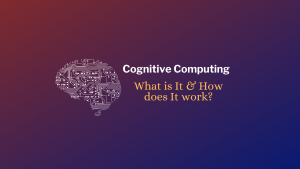Virtual Reality (VR) has been a buzzword in the gaming design industry for several years and for good reason. Not to mention, the immersive and interactive experience of VR gaming has the potential to revolutionize the way games are designed and played. Any given game development company is quickly recognizing the potential of virtual reality and its potential.
Thus, they are ultimately incorporating it into their user-based development processes using the best game design monetization models to earn more revenue as a result. Realistically, when we talk about virtual reality, many of us think of science fiction films like ‘Minority Report’. However, the truth is that nowadays, VR completely blends into our daily lives.
From video games to medicine to education… Virtual Reality is here to stay. Notably, the main difference between Virtual Reality with Augmented Reality is that VR builds the world in which we immerse ourselves through a specific headset. As for Augmented Reality (AR), our own world becomes the framework within which objects, images, or similar are placed.
Everything we see is in a real environment and it may not be strictly necessary to wear a headset. The clearest and most mainstream example of this concept is Pokémon Go. That said, in this post, we will discuss the impact of virtual reality on game design and how game development companies can leverage VR to create engaging and immersive gaming experiences.
Understanding How Virtual Reality (VR) Works In Cloud Computing
Virtual Reality (VR) is where users immerse themselves in a specifically designed and simulated environment for a specific purpose. For example, medical training and video games are explored without borders and boundaries in 360 degrees. VR creates a virtual, simulated environment where people interact in simulated environments using VR goggles or other devices.
On one hand, Virtual Reality enhances the user experience to the next level via VR headsets or other VR devices like Oculus Quest 2, Hp reverb G2, and the like. Virtual Reality, on the other hand, is a self-controlled environment where the user can control the simulated environment via a system. VR enhances a fictional environment by using sensors, and displays.
Coupled with other features like motion tracking, movement tracking, etc. This may seem extremely futuristic, yes, but its origins are not as recent as we might think. In fact, many people consider that one of the first Virtual Reality devices was called Sensorama — a machine with a built-in seat that played 3D movies, and it gave off odors and generated vibrations.
Surprisingly, all these elements were to make the experience look and feel as vivid as possible. According to historical data sources, the invention dates back as far as the mid-1950s. But, it’s the subsequent technological and software developments over the following years that brought with them a progressive evolution — both in devices and interface design.
How Virtual Reality (VR) Impacts The Gaming Design Industry
As we mentioned, Virtual Reality is a technique that simulates vision to create a 3D world in which the user appears to be immersed while surfing or experiencing it. The user experiencing the 3D world then controls it in full 3D. On the one hand, the user creates 3D VR settings. While, on the other, they experience or explore them using suitable equipment like VR headsets.
In the same fashion, some gadgets, such as controllers, enable users to control and explore the material. Soon, VR Technology will be used to understand photos and movies based on image position, surroundings, and appearance. This includes using equipment such as cameras and other technologies such as artificial intelligence, big data, and vision.
Resource Reference: What Is Metaverse? The Next Cloud Technology Outlook
Medicine, culture, education, and architecture are some of the areas that have already taken advantage of this technology. From guided museum visits to the dissection of a muscle, VR allows us to cross boundaries that would otherwise be unimaginable. All this means that VR is no longer science fiction — it’s integrated into our present, and in the coming years.
Meaning, that it will lead to advances that will shape the future. It means that Virtual Reality is fully immersive and everything we see is part of an environment artificially constructed through images, sounds, etc. With that in mind, in the next section, we are going to illustrate a few ways in which Virtual Reality (VR) Technology impacts the gaming design business industry.
1. Enhanced Immersive Experience
One of the most significant impacts of virtual reality on game design is the ability to create a more immersive experience for players. VR gaming allows players to feel like they are actually inside the game world, which can enhance their emotional investment in the game. This level of immersion can lead to more engaged players and increased replay value.
Essentially, which can benefit game design companies. With VR, players are not just watching the game, but they are also experiencing it. They can look around and interact with the environment, making it feel like they are truly in the game. For example, in a first-person shooter game, players can feel like they are actually holding a gun and aiming at their targets.
In a racing game, players can feel like they are behind the wheel of a car and experience the speed and thrill of the race. This enhanced immersion can make players feel more connected to the game, making the gaming experience more enjoyable.
2. Unlimited Learning Resources
VR can create a computer-generated environment with scenes and objects that appear to be real. Whilst, making the user feel they are immersed in their surroundings. In most cases, this environment is perceived through a device known as a Virtual Reality headset or helmet. This allows us to immerse ourselves in video games as if we were one of the characters.
For instance, we can use Virtual Reality Technology to learn how to perform heart surgery or improve the quality of sports training to maximize performance. In addition, it’s almost imperceptible that latency will make it possible for consumers to receive images in real-time, almost as if they were seeing them with their own eyes.
3. New Games Design Possibilities
Virtual Reality opens up new possibilities for game design that were not previously possible. For example, VR games can be designed to take advantage of 360-degree environments, creating unique gameplay experiences. In traditional games, players are limited to what is on their screen, but with VR, they can look around and explore their surroundings.
While, at the same time, making the game feel more expansive. Additionally, VR technology can be used to simulate physical interactions and movements, which can make games feel more realistic. For example, in a sports game, players can feel like they are actually swinging a bat or hitting a ball. While in hunting games, they feel as if they a stretching the bow.
In a puzzle game, players can feel like they are actually manipulating objects in the environment. This increased level of interactivity can make the gaming experience more engaging and can make players feel like they have more game control.
4. Increased Gaming Console Interactivity
Virtual Reality Gaming can also increase the interactivity between players and the game world. With the use of VR controllers, players can physically interact with objects and characters in the game, which can make the gaming experience more engaging.
This increased level of interactivity can lead to more player agency and control. Overall, which can result in a more satisfying gaming experience. For example, in a game where players have to pick up and move objects, the use of VR controllers can make the experience feel more realistic and immersive. Players can actually pick up and move objects in the game.
Rather than just pressing a button to do so. This level of interactivity can make players feel like they are actually in the game world and can make the overall gaming experience more enjoyable.
5. New Challenges For Game Developers
While VR presents new design possibilities, it also presents new challenges for any game design company. Developing games for VR platforms requires specialized knowledge and expertise. In addition, VR Games require a higher level of performance and graphics quality than traditional games, which can be a challenge for game development companies to achieve.
Game developers must have a strong understanding of VR Technology and how to design games that take advantage of it. They must also have the technical expertise to create games that run smoothly and look good in a VR environment. This can be a significant challenge, but some game development companies can successfully overcome these challenges.
For one thing, they have the potential to create unique and engaging gaming experiences for their target audiences.
Summary Thoughts:
VR is one of the technologies with the highest projected potential for growth. According to the latest forecasts from IDC research, investment in VR and AR will multiply 21-fold over the next four years. In addition, both technologies will be key to most businesses’ digital transformation plans, and their spending in this area will exceed that of the consumer sector.
In the future, over half of the largest companies will have a VR and RA strategy. Nowadays, the market is demanding applications that go beyond leisure, tourism, or marketing and are more user-affordable. Virtual Interfaces also need to be improved to avoid defects like clipping — it makes certain solid objects appear as though they can be passed through.
Or to minimize the effects that VR produces on people, among them motion sickness. Effectively, which consists of dizziness induced by the mismatch between the movement of our body and what is being seen in the virtual world. Big technology companies are already working to develop headsets that do not need cables and that allow images to be seen in HD.
They are developing Virtual Reality headsets in 8K and with much more powerful processors. There is even talk that in the next few years, they could integrate Artificial Intelligence (AI) into the interfaces. The latest 5G network can also provide very interesting scenarios for the evolution of VR. Whilst, allowing more devices and large user communities to be connected.







